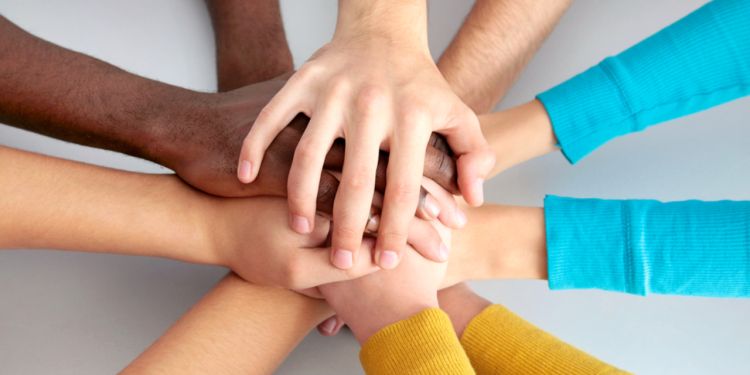
In recent years, the Japanese government has implemented various measures to achieve a more diverse and inclusive society that values the contributions of individuals from different backgrounds, genders, abilities, and cultures. If you want to relocate to Japan and care for diversity, equality, and inclusion in this country, this article provides you with valuable insights.
Gender gap in Japan
Regarding the gender gap index, the World Economic Forum's 2023 Global Report ranked Japan 125th out of 146 countries. This report highlighted the noticeable lack of women's involvement in economics and politics. However, the country scores high in health and education (other sources: Gender gap index 2023 - Japanese).
According to the Cabinet Office's White Paper on Gender Equality 2023, only 13.2% of surveyed employed individuals were female managers. This percentage is significantly lower than countries like the United States (41.1%), Singapore (38.9%), and Germany (29.4%). Although the overall ratio of women in the workforce is 44.7%, the number of female managers remains alarmingly low.
The good news is that the gender pay gap in Japan has been narrowing for two consecutive years and reached 75.7 in 2022, with men at 100. For your information, employers in Japan must now disclose information about the gender pay gap under the government's Act on Promotion of Women's Participation and Advancement in the Workforce. This Act, which came into effect in 2022, mandates that companies publicly report gender wage gaps every year within 3 months of the end of their fiscal year.
Promoting women to leadership positions
Despite progress in recent years, gender inequality remains a persistent issue in Japan, particularly in leadership positions. In 2022, Japan had the lowest percentage of women in managerial positions, with only 12.9%, much lower than the Organization for Economic Cooperation and Development (OECD) average of 34.1%.
According to a Ministry of Health, Labor, and Welfare survey on equal employment, only 12.7% of women held managerial positions at the level of section manager or higher in FY2022. The number of women in managerial roles at companies reached an all-time high, yet it still lags behind in global rankings.
To promote women's participation in leadership roles, the government has introduced various measures, including the establishment of gender diversity quotas, the implementation of leadership development programs tailored to women, and the expansion of family-friendly policies such as parental leave and flexible working arrangements.
These initiatives aim to create a more inclusive and equitable workplace where women have equal opportunities for advancement, ultimately driving innovation and economic growth (reference: Priority policy for women's empowerment and gender equality 2023 - 女性版骨太の方針2023 – Japanese).
Parental leave in Japan
As mentioned above, to support gender equality and empower women, Japan also offers incentives for fathers to take parental leave, but it is still seen negatively at work. Both parents can take up to a year of leave, with two extra months if both take some time off. The percentage of new fathers taking leave has risen from 1% in 2010 to 14% in 2021. In October 2022, a new four-week paternity leave was introduced (source: OECD).
Living in harmony with foreigners – Policies in Japan
Japan's appeal as a destination for expatriates has been steadily growing, with an increasing number of foreigners choosing to make Japan their home. According to recent data from the Ministry of Justice, the number of registered foreign residents in Japan surpassed 3 million by the end of June 2023, reflecting a trend of steady growth.
As of October 2023, Japan had 2,048,675 foreign workers, 225,950 more than the previous year. The number of establishments hiring foreign nationals reached 318,775, an increase of 19,985 from the previous year. Tokyo had the highest number of foreign workers, at 79,707, followed by Osaka, with 25,450, and Aichi, with 25,225.
To facilitate the integration of expatriates into Japanese society, the government has implemented various initiatives to foster cultural understanding and acceptance. Starting in 2024, the Ministry of Justice (MOJ) has decided to designate January as "Life In Harmony Promotion Month" to raise awareness and promote understanding of the realization of harmonious coexistence (source: Public Relations Office - Government of Japan).
Language assistance programs, community engagement activities, and cultural exchange events have become commonplace, helping to bridge the gap between Japanese nationals and foreigners. These efforts not only enrich the cultural fabric of Japan but also promote a spirit of cooperation and mutual respect among its diverse population.
LGBTQ+ in Japan
As globalization continues to progress, the importance of accepting diverse values, including the existence of sexual minorities, has become more evident.
Japan's parliament made history in June 2023 by passing its first-ever law to combat anti-LGBTQ discrimination. Although this progressive step forward acknowledges the rights of the LGBTQ community, it unfortunately falls significantly short of providing them with the full and equal protection they deserve against discrimination.
In Japan, currently, marriage is restricted to opposite-sex couples based on the legal sex listed in their family registry. This means that even if a couple identifies differently, they cannot marry if their legal sex is the same.
Shibuya and Setagaya in Tokyo were the first two wards in Japan to start certifying same-sex couples and accepting oaths in 2015. Since then, more districts and cities have adopted same-sex partnerships. By March 1, 2024, at least 397 local governments in Japan had implemented the partnership system for same-sex couples.
Japan still has a long way to go in achieving equality despite some progress in public attitudes towards LGBTQ+ individuals in recent years. The failure of the law passed last summer highlights the persistence of discriminatory practices, but 2024 could mark a positive step forward with nationwide same-sex partnerships.
Accessibility in Japan
According to the Ministry of Health, Labour, and Welfare, approximately 9.2% of the Japanese population has some form of disability. In addition, by 2070, Japan's population is expected to drop to under 90 million, with the percentage of people aged 65 and older increasing from around 30% to about 40%. This highlights the importance of creating an environment that accommodates accessibility needs.
To support individuals with disabilities and elderly people, the government has implemented comprehensive policies and initiatives, including promoting barrier-free infrastructure, providing employment support programs, and expanding educational opportunities. These efforts aim to remove physical, social, and economic barriers, enabling people with disabilities to live with dignity and participate fully in society.
Have you heard about the yellow Tenji blocks created in Japan to help visually impaired pedestrians navigate while walking? The public transportation, lifts, and toilets are designed to be accessible to everyone. Wheelchair users can conveniently purchase train tickets and pass through the toll gate with a touchscreen. Toilets are equipped with handrails and emergency buttons for added safety, as well as guides for elderly drivers and so on! Japan is full of innovative and impressive designs catering to various needs.
Useful links:
The Government of Japan (Diversity and Inclusion)
Current Status of Gender Equality and the policy for women's empowerment and gender equality 2023 - Japanese
Gender gap pay in Japan 2023 - Japanese
Roadmap for the Realization of a Society of Harmonious Coexistence with Foreign Nationals (MOJ)
The situation of people with disabilities 2023
Future Population Projections (2023 Estimates) - Japanese
We do our best to provide accurate and up to date information. However, if you have noticed any inaccuracies in this article, please let us know in the comments section below.












Comments